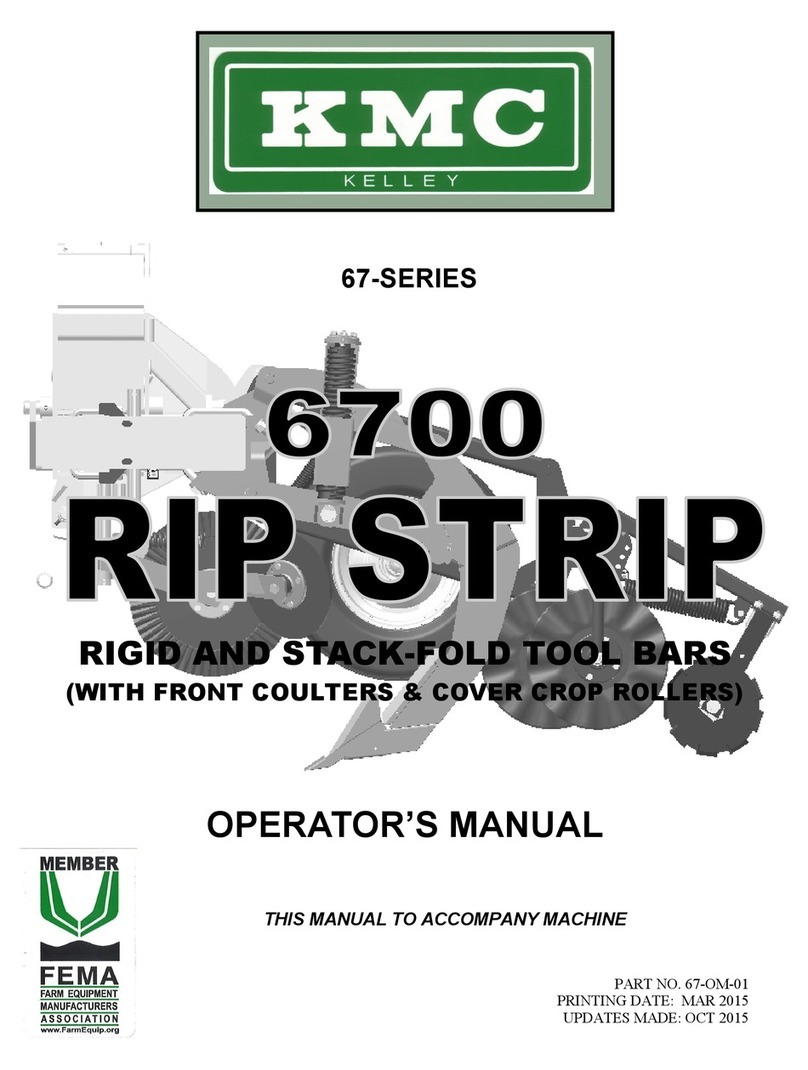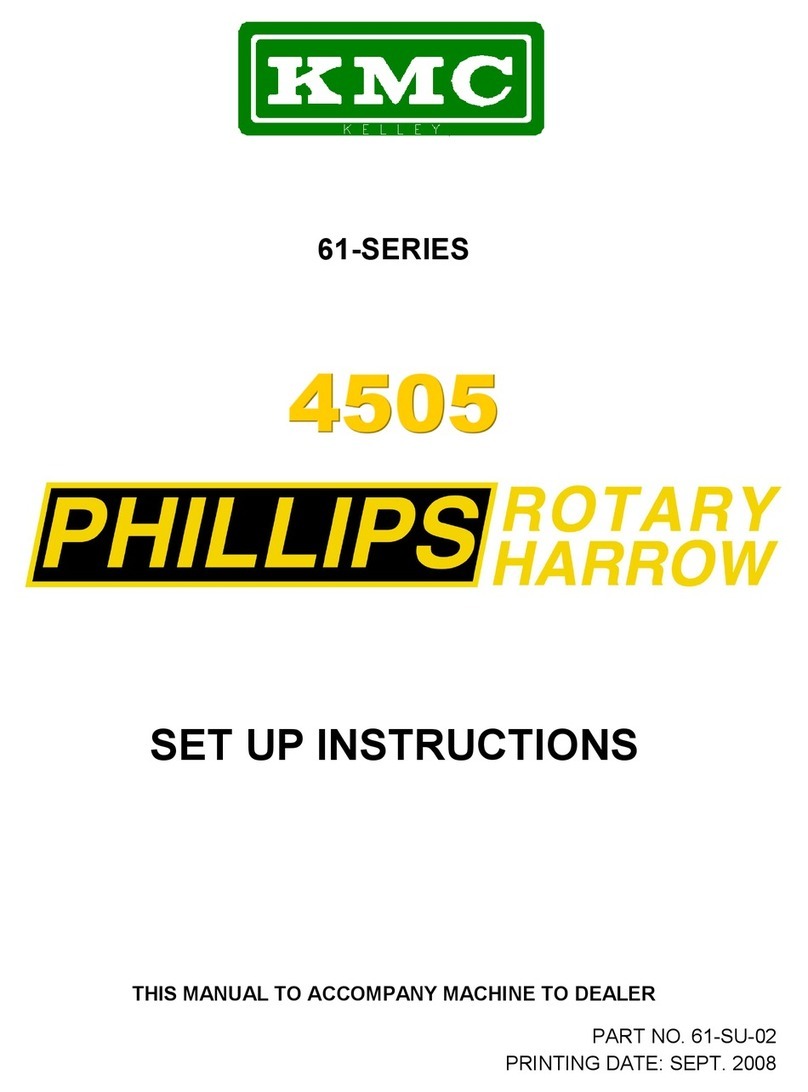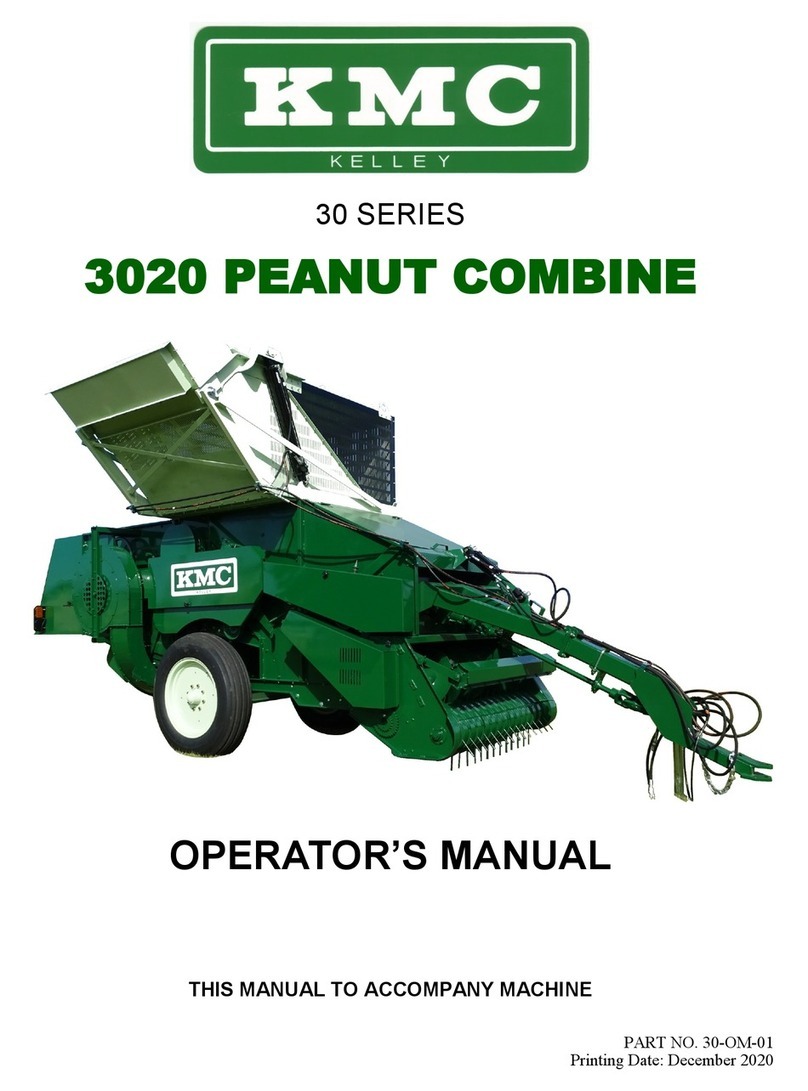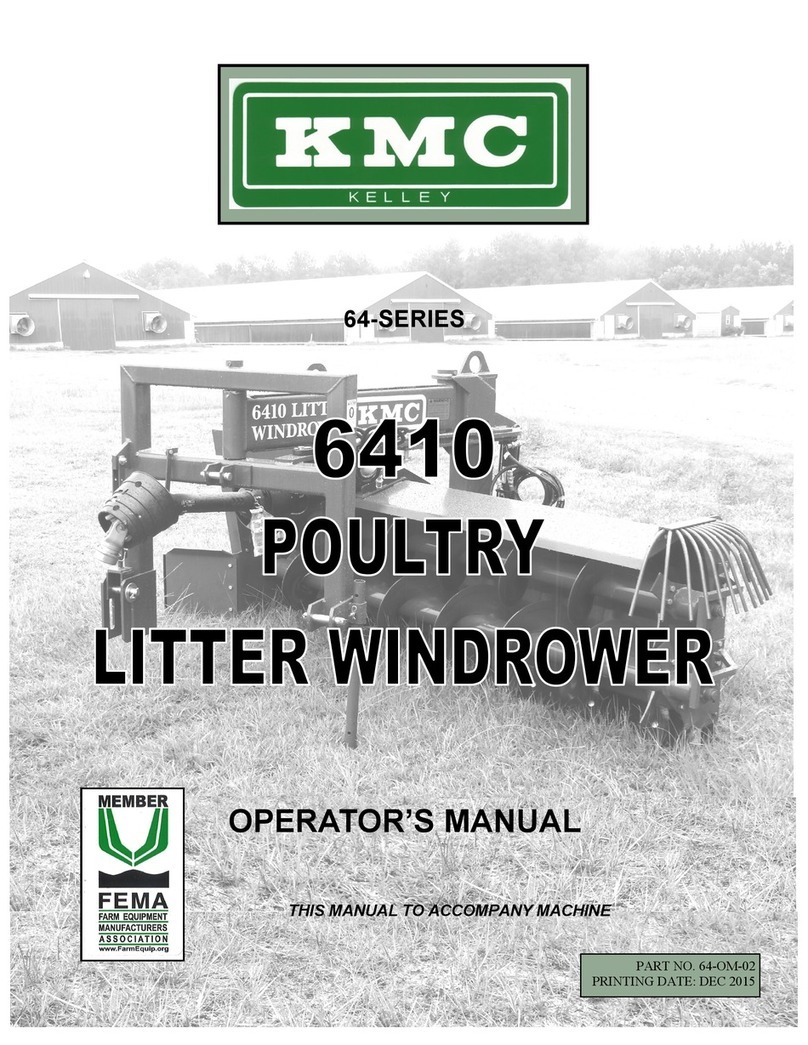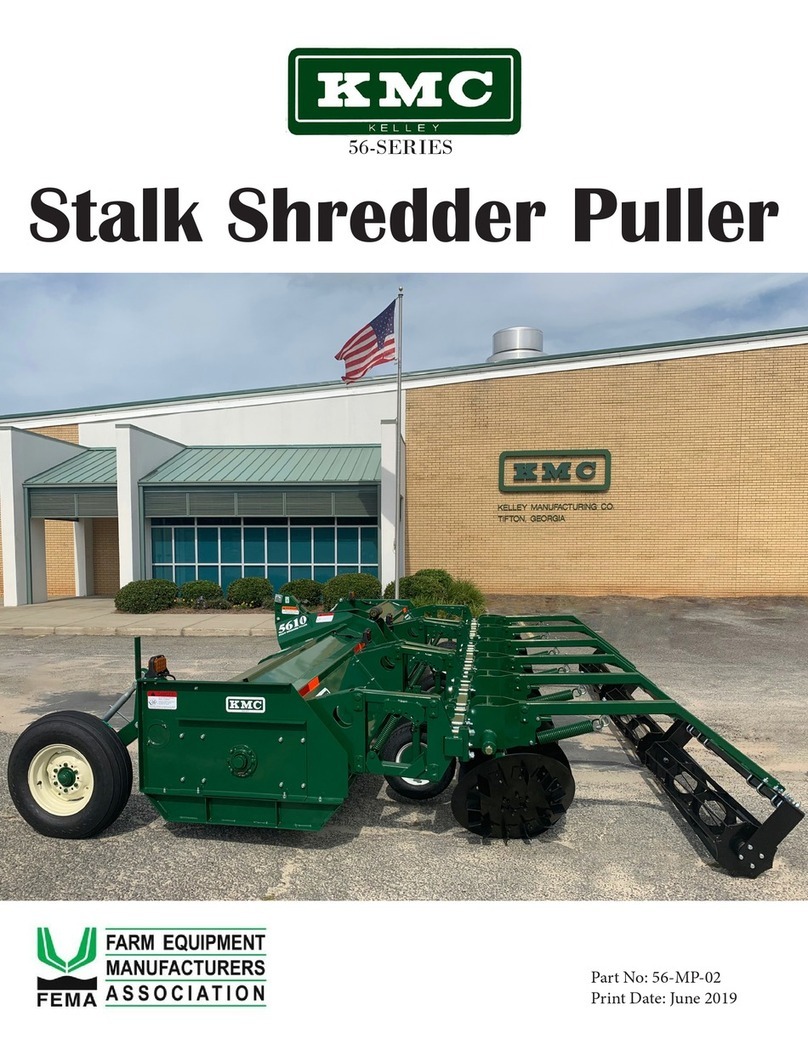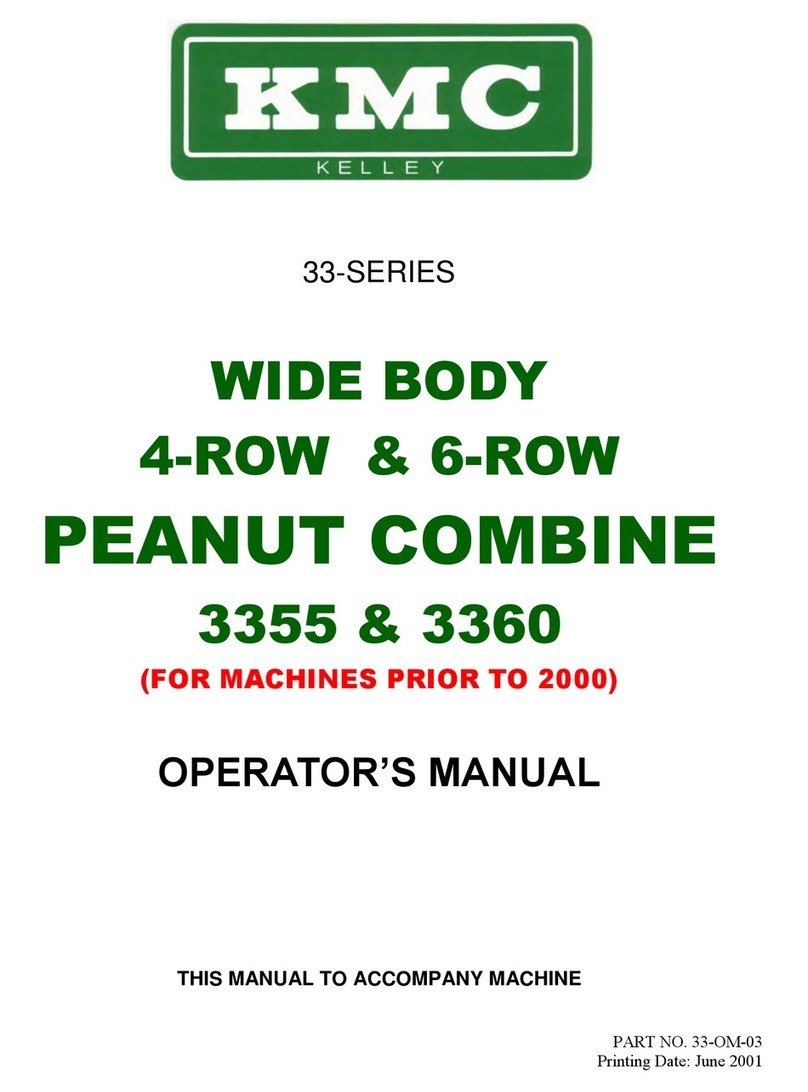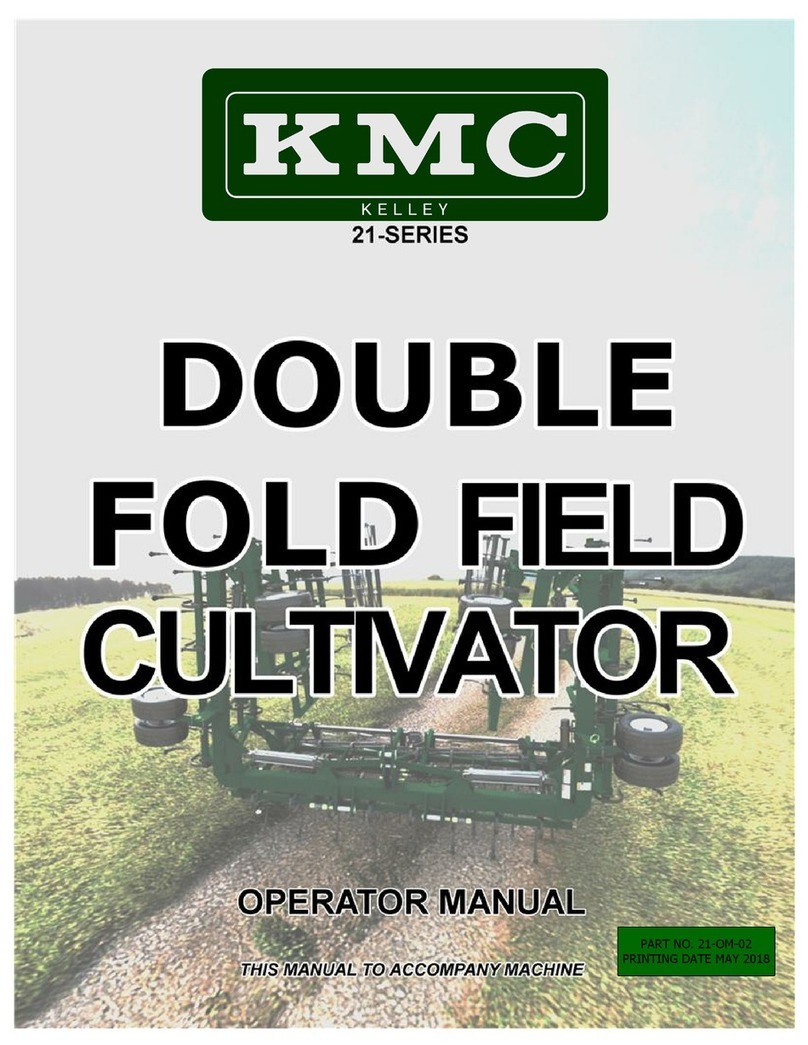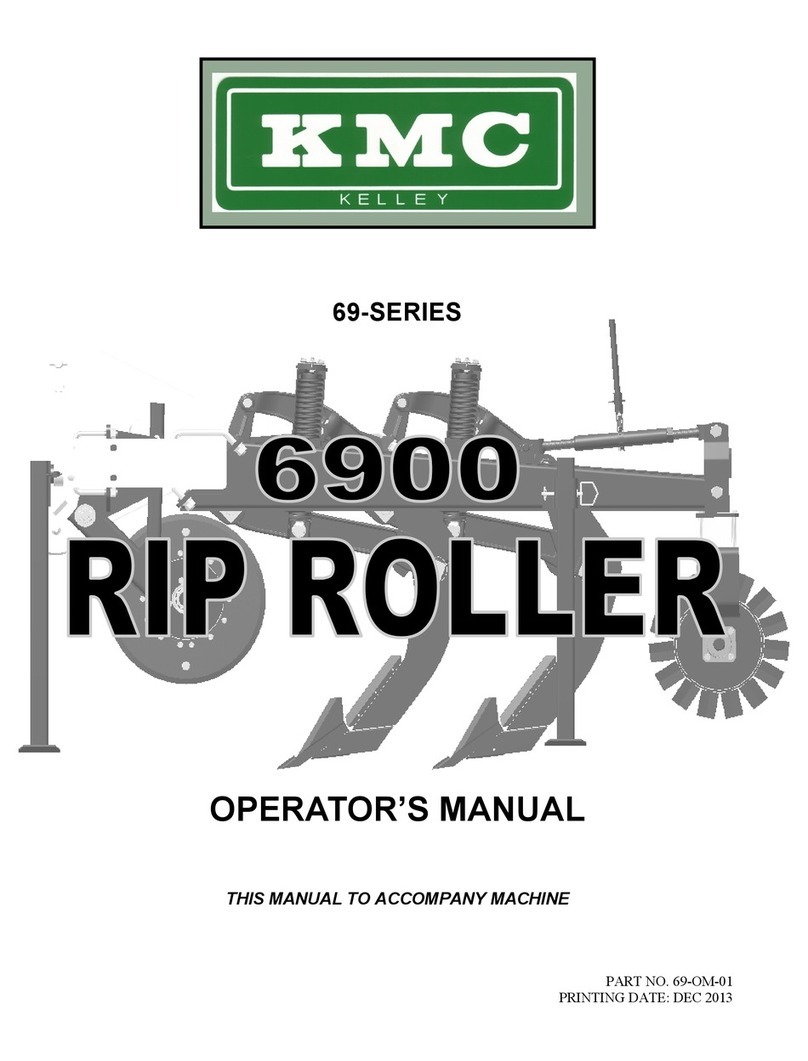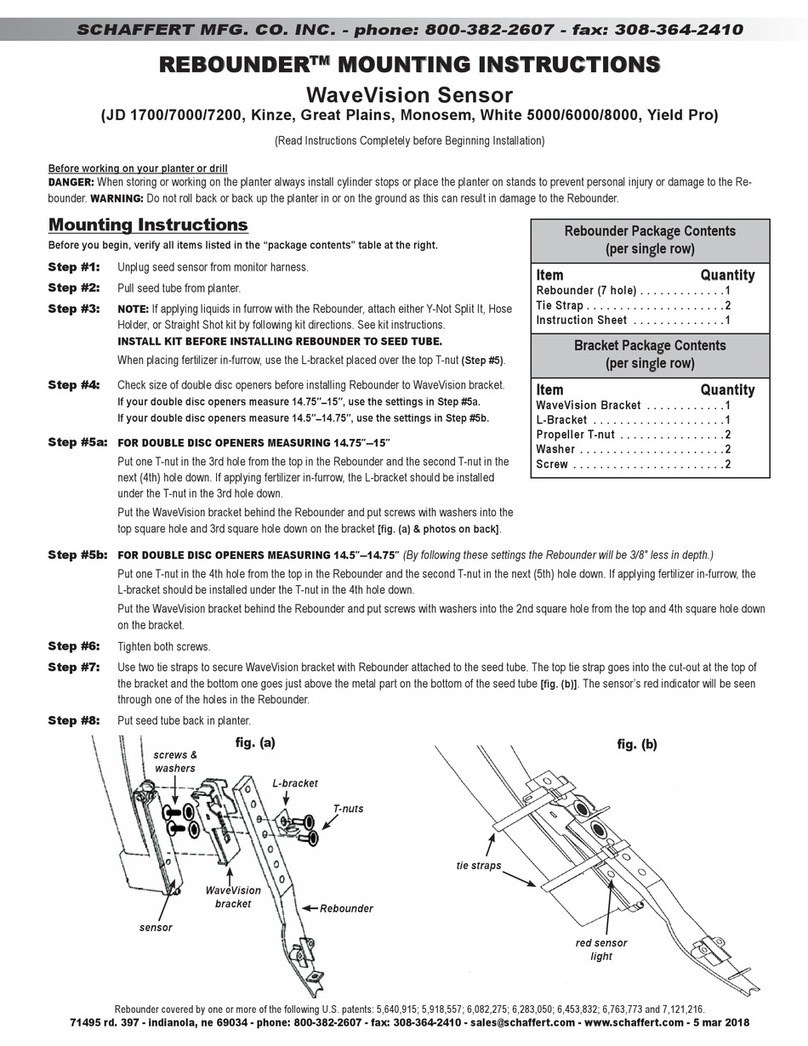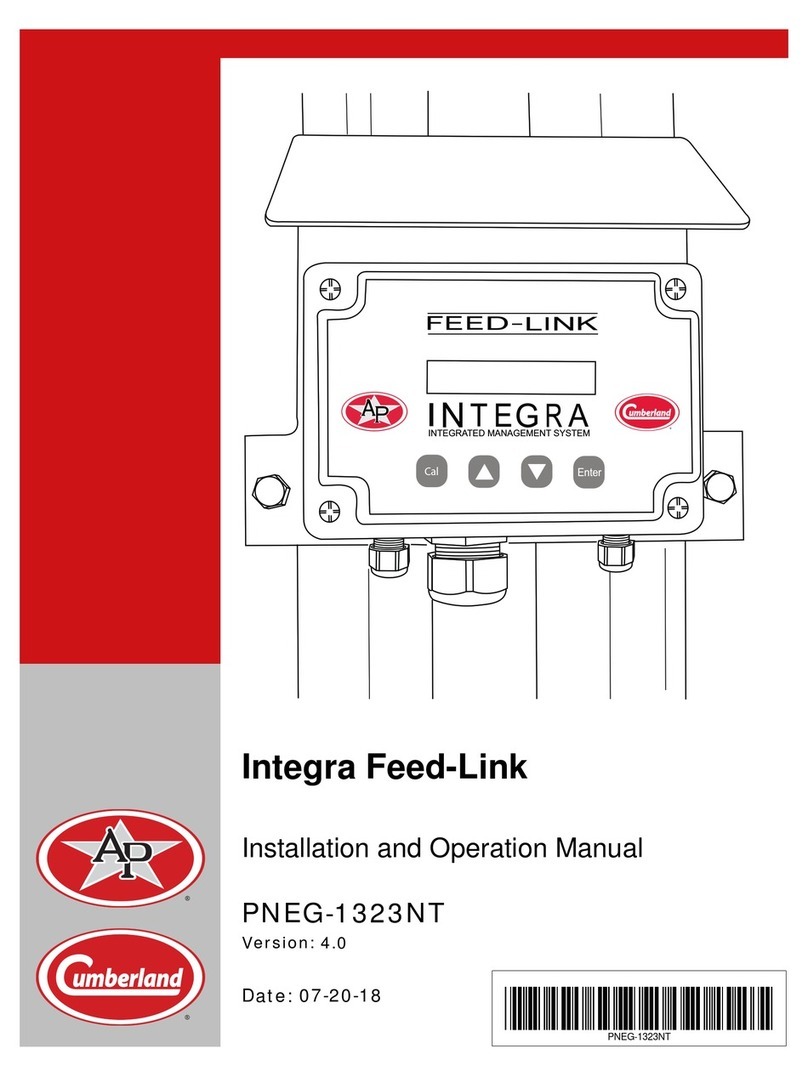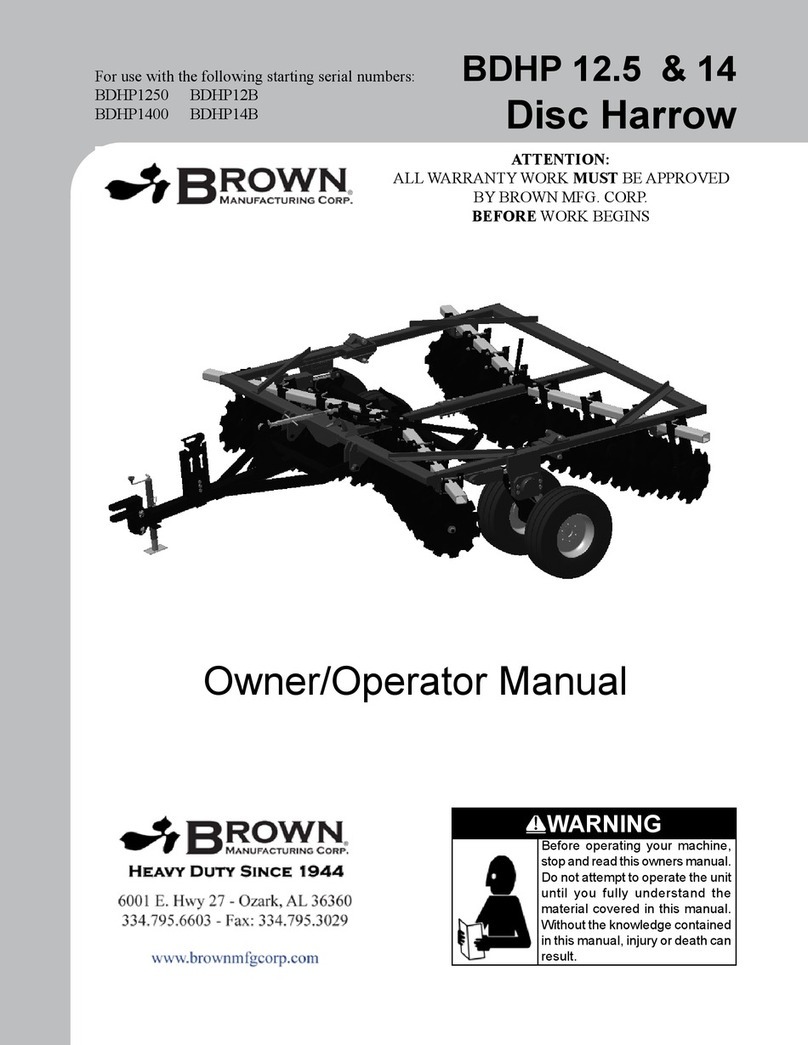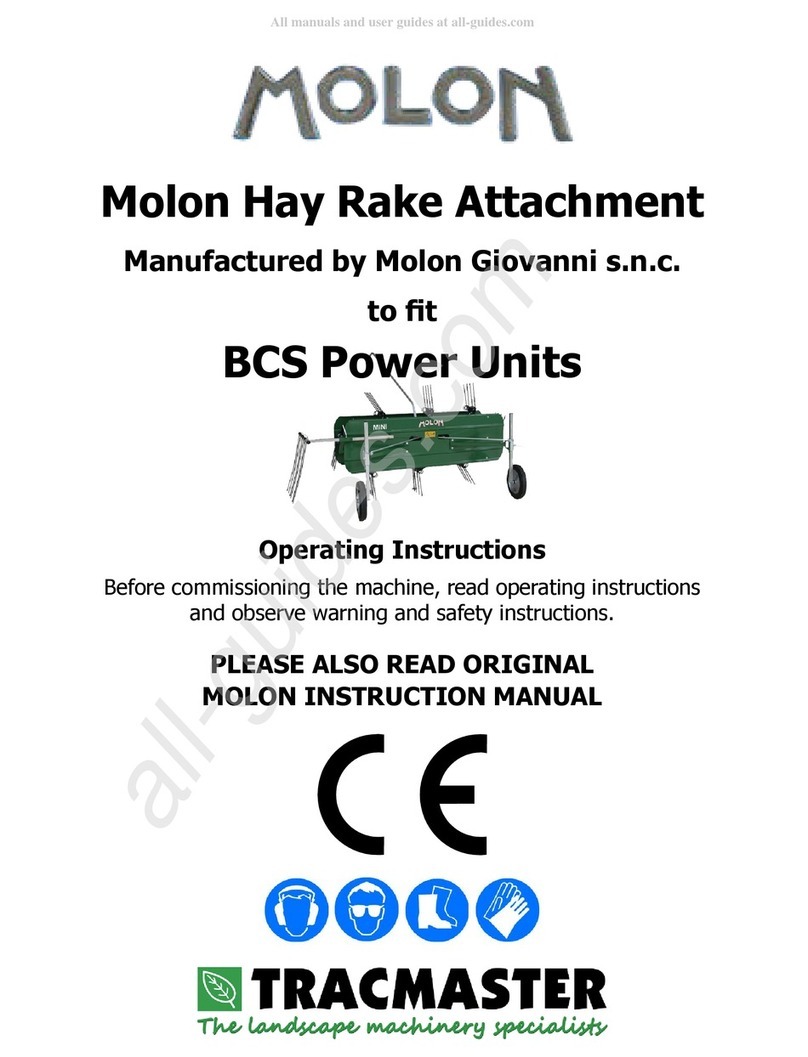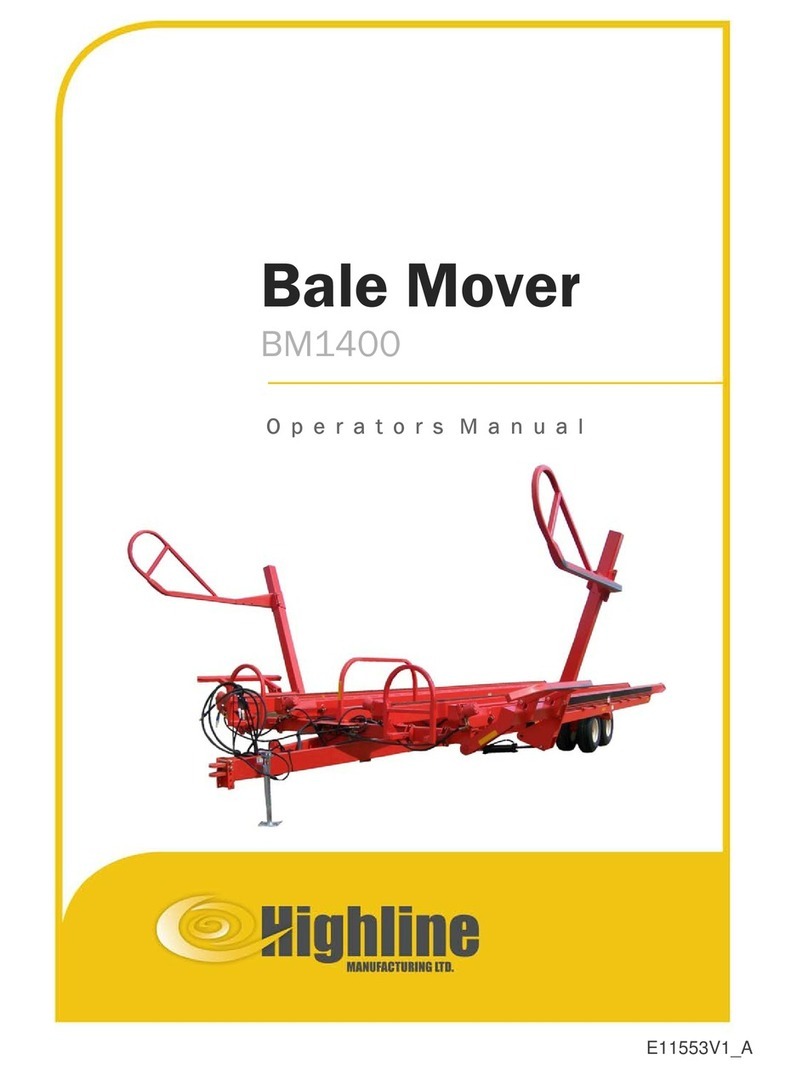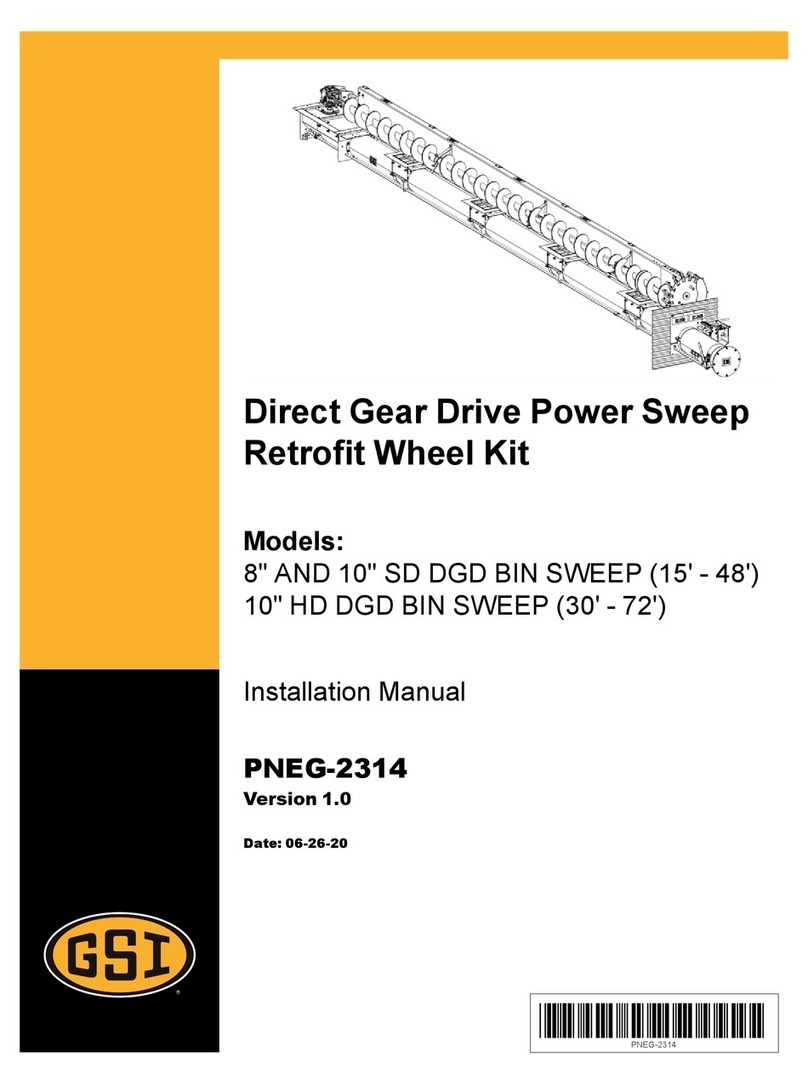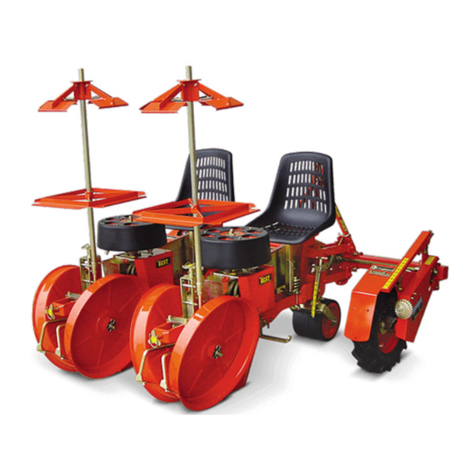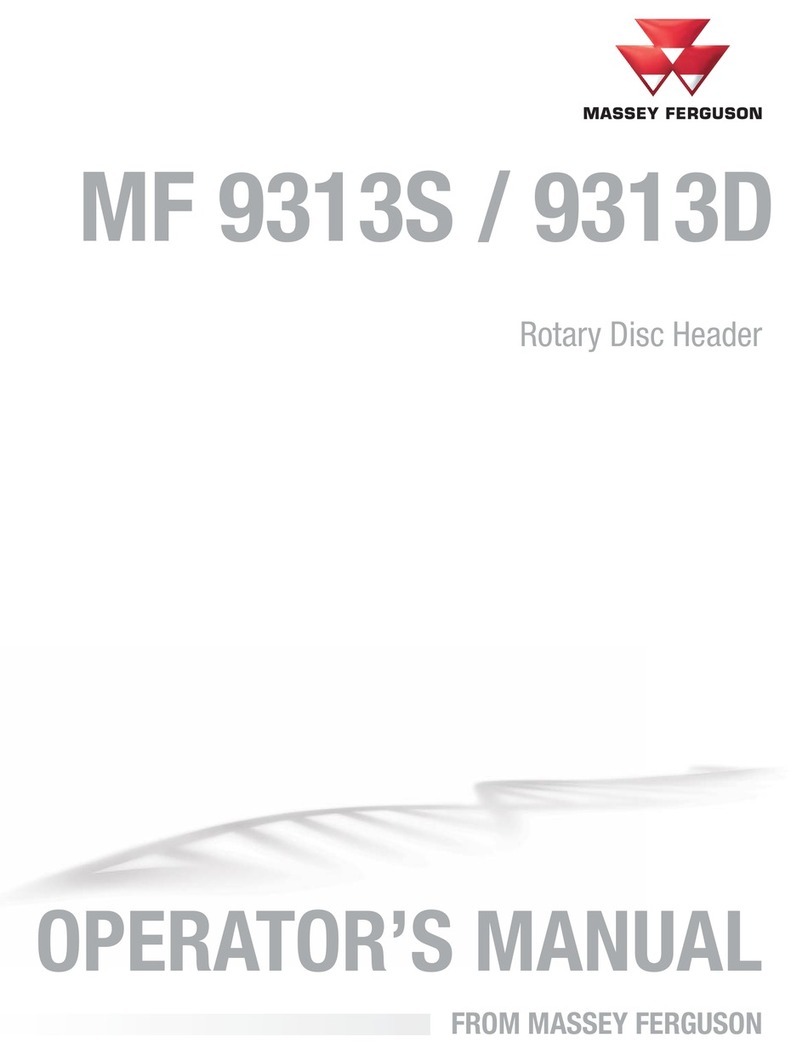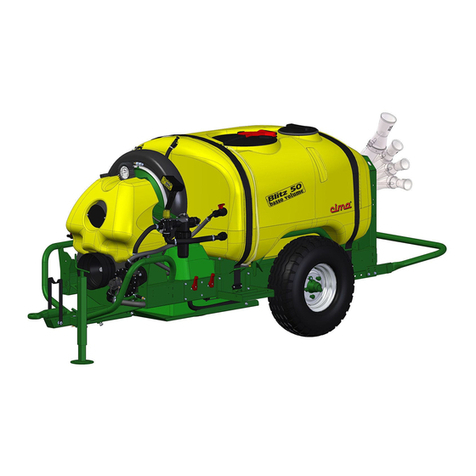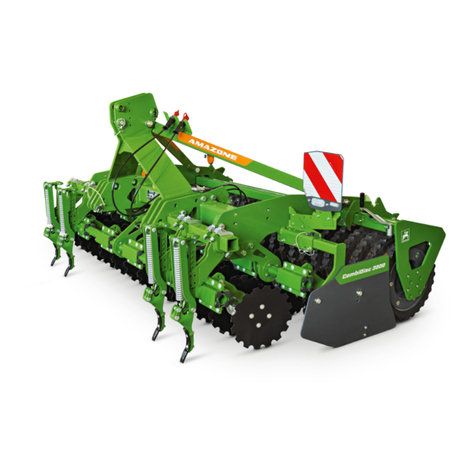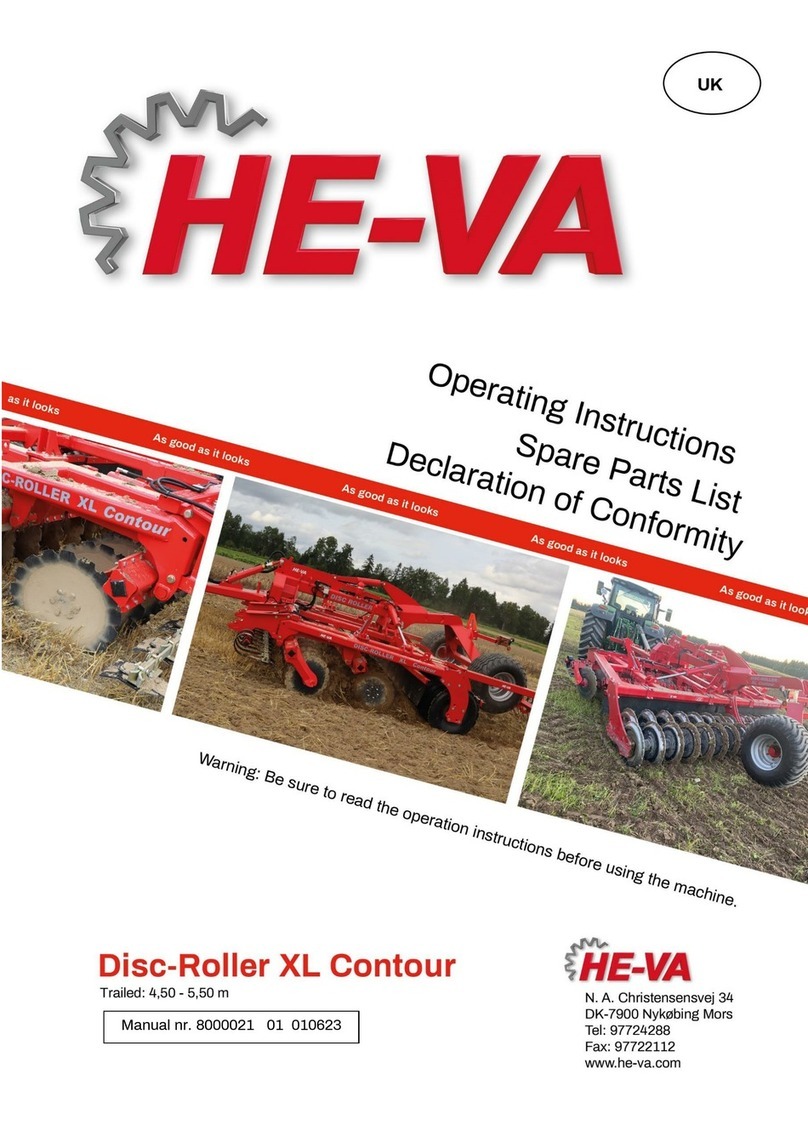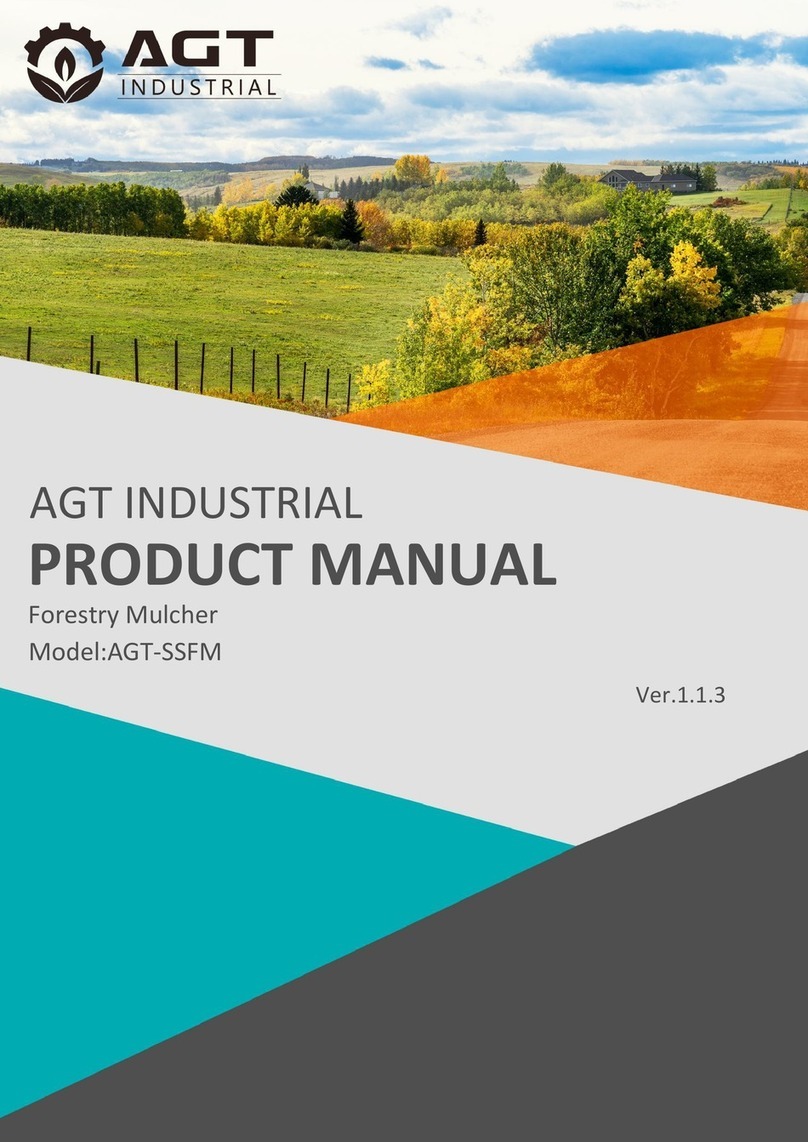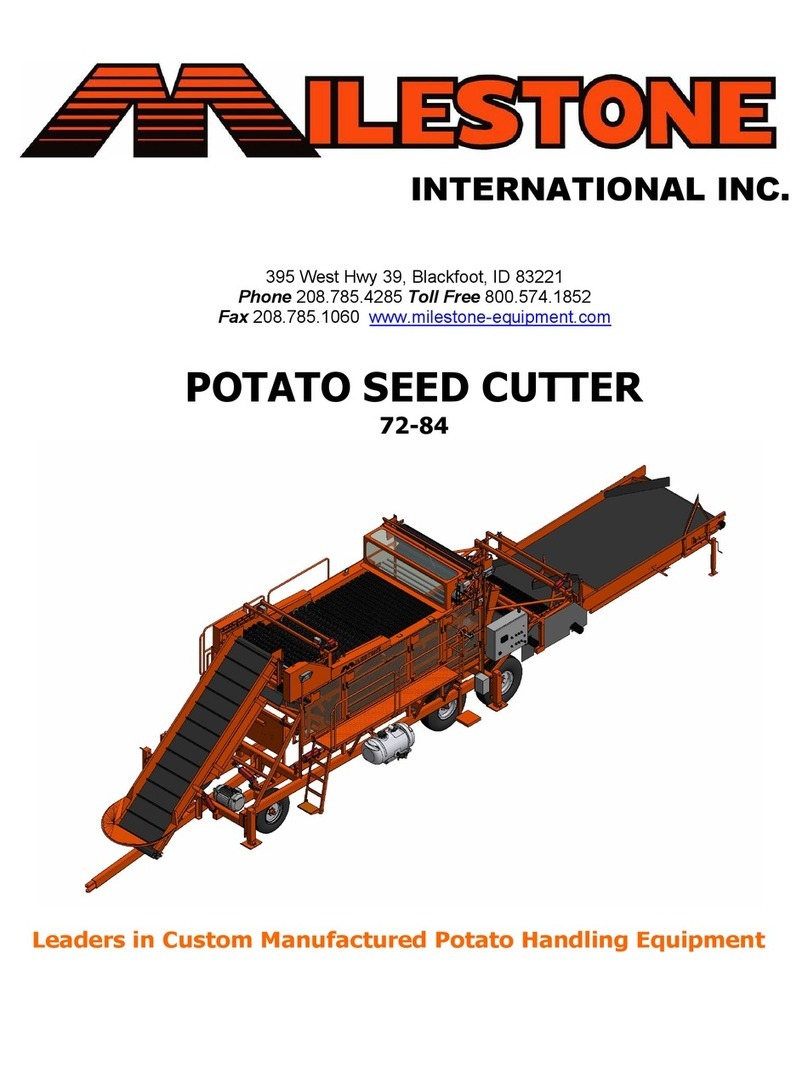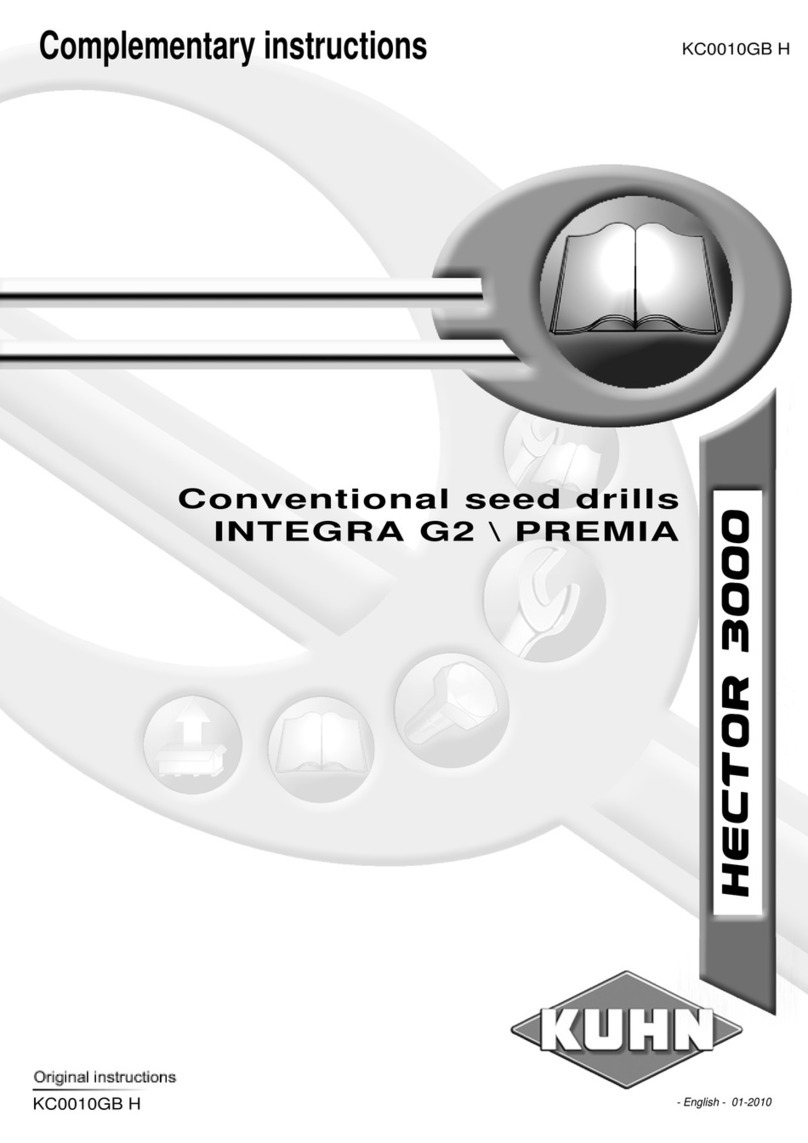
4
ASSEMBLY INSTRUCTIONS
There are several things which may need assembling before the peanut combine is ready for opera-
tion. The assembly order will depend on how the machine has been disassembled for shipping.
ATTACH THE SIX ROW HEADER
Use extreme caution when attaching the head to
the combine. It is very heavy and should be handled
in a secure manner at all times to avoid injury.
First position the header under the tongue of the
combine. Raise and tilt the header so that it fits
squarely against both combine side frame and the up-
per header. Install the 1/2 x 1 1/2 capscrews, flat-
washers, lockwashers, and hex nuts (8 of each) that
connect the rear of the header to the side frame. Do
not fully tighten at this point. Next install the 1/2 x 1
1/2 carriage screws, flatwasher, lockwashers, and hex
nuts (12 of each) that connect the top of the detached
header to the under side of the tongue supports. Now
tighten all bolts securely. Check the joint where the
square tube of the drop floor meets the square tube of
the #1 concave. The joint should be tight enough so
that no peanuts can fall out. There should not be any
raised corners or surfaces that could shell or damage
peanuts. Adjust each tube position in the slotted
holes if necessary.
Next attach quick disconnect couplers to the hy-
draulic hoses. The hoses for the tank lift, header lift,
and tongue shift (if equipped) have 1/2-14 NPT
threads. The hoses for header rotation have 3/4-16 O-
Ring threads. The header requires a constant flow of
high pressure oil and the O-Ring provides a better
seal than the pipe threads. Use the appropriate adap-
tor on each hose.
Six-Row headers will require dealer assembly of
the flashing lights on the ends of the header. Connect
wires provided, making sure that the right and left
sides operate properly.
MOUNT THE TANK TO THE COMBINE
First lift the tank into position using the loops
provided on the tank frame, this will help keep the
tank near level while working it into position. Align
bolt holes and air-lift duct and lower into position and
install bolts into support arms. Make sure tank is sit-
ting flat on combine top and square with sides and
frame before disconnecting lift front tank. If tank
does not sit flat on combine, adjust support arms to
right or left as needed to allow tank to sit flat on
MOUNT THE REAR HOOD
For some shipping situations, it may be necessary
to mount the rear hood. If so, first hang the rear hood
onto the mainframe by interlocking the front lip of the
hood with the rear lip on the mainframe. Center the
hood on the rear support, then secure its position by
installing capscrews through mounting holes in edge
Figure 1
frame. Secure tank to combine by tightening attach-
ment bolts previously installed. Next connect hydrau-
lic hoses between combine mainframe and tank using
the hoses provided. See Figure 1.
BOLT HERE
BOLT HERE
Figure 2
